Motion of the Cervical Spine:
The cervical spine can move axially and nonaxially in all three cardinal planes (sagittal, frontal, and transverse). The axial motions, shown in Figure 8, are as follows:
- Extension and flexion in the sagittal plane
- Left lateral flexion and right lateral flexion in the frontal plane
- Right rotation and left rotation in the transverse plane
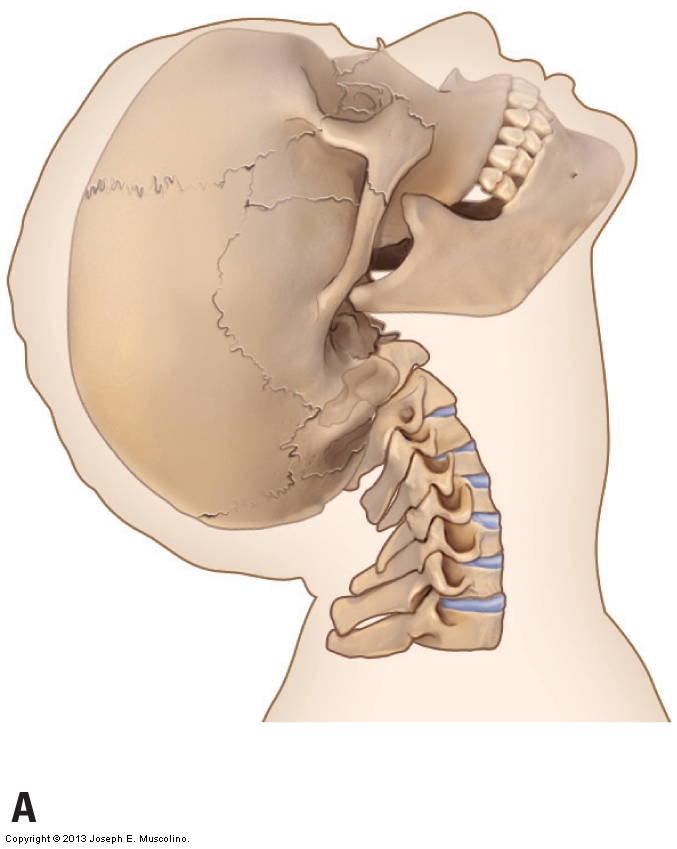
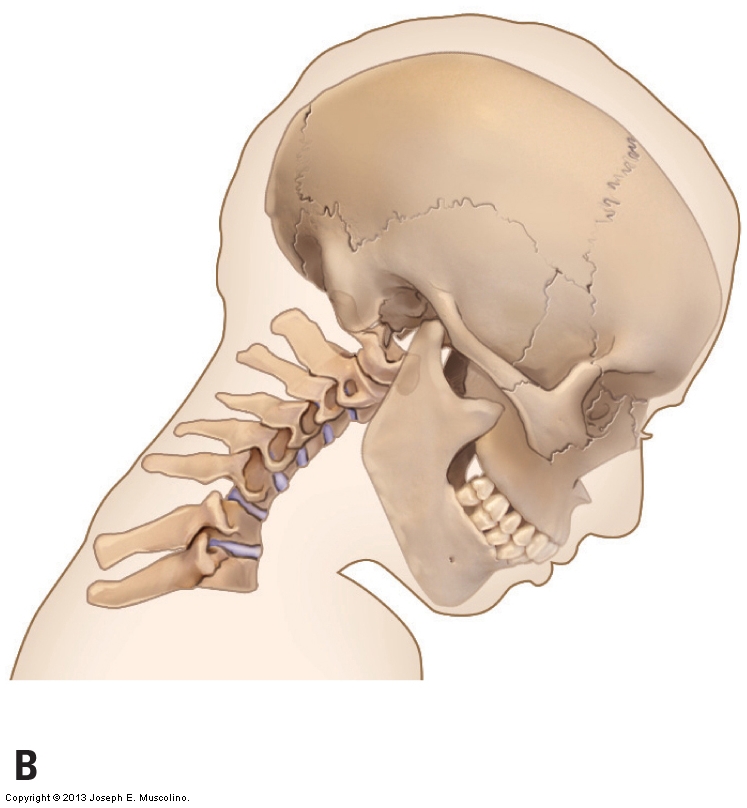
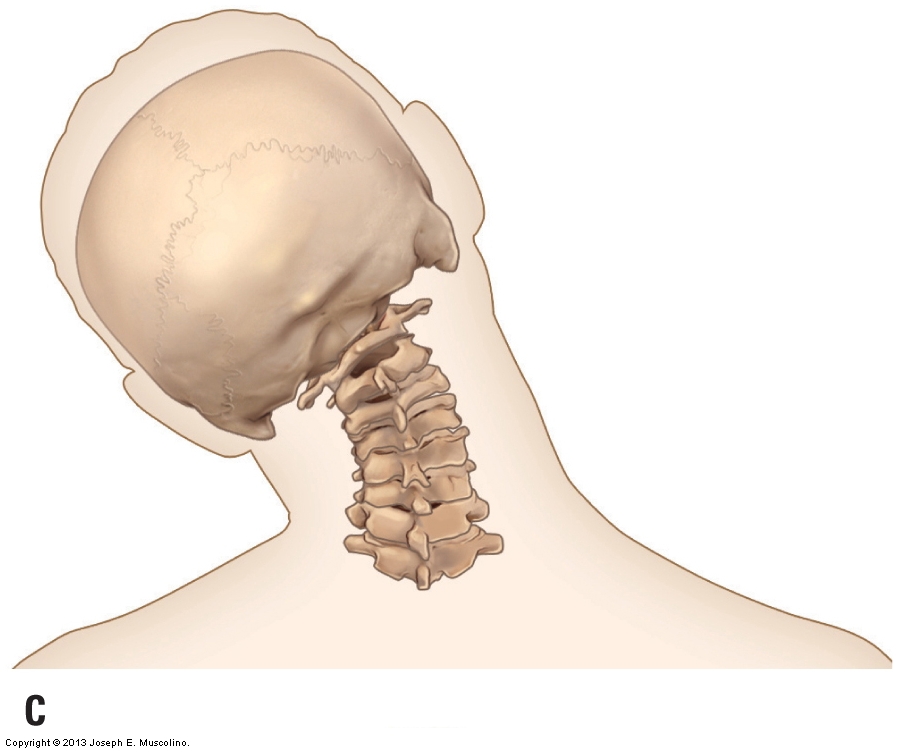
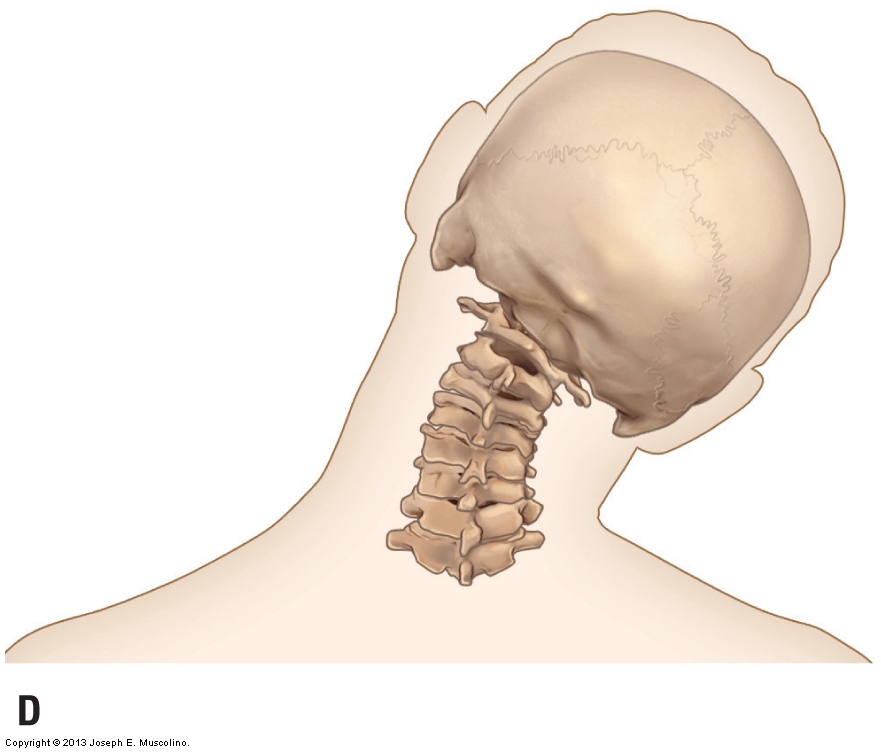
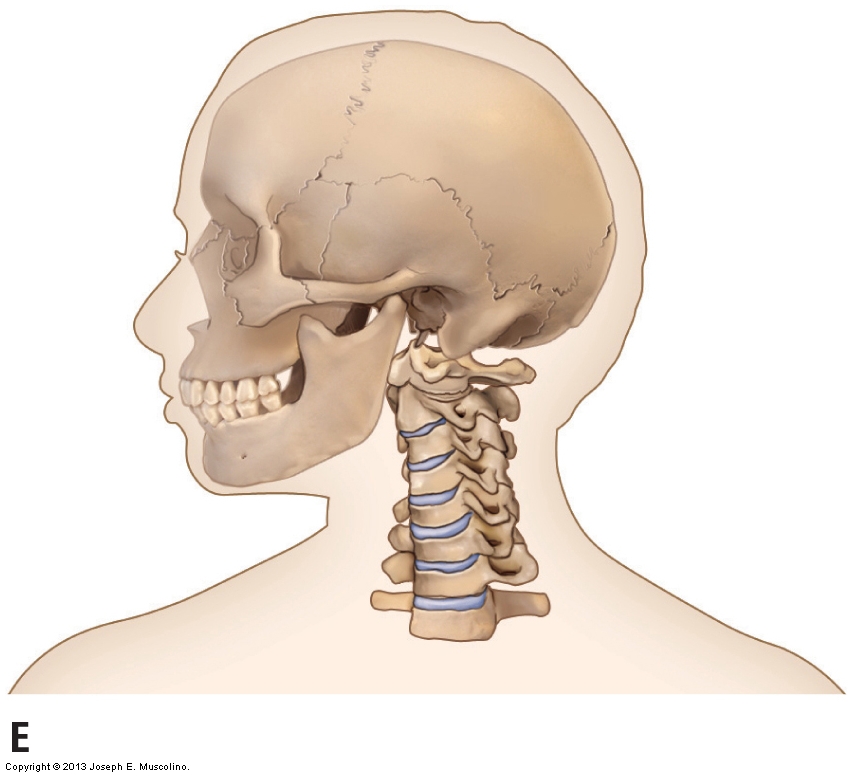
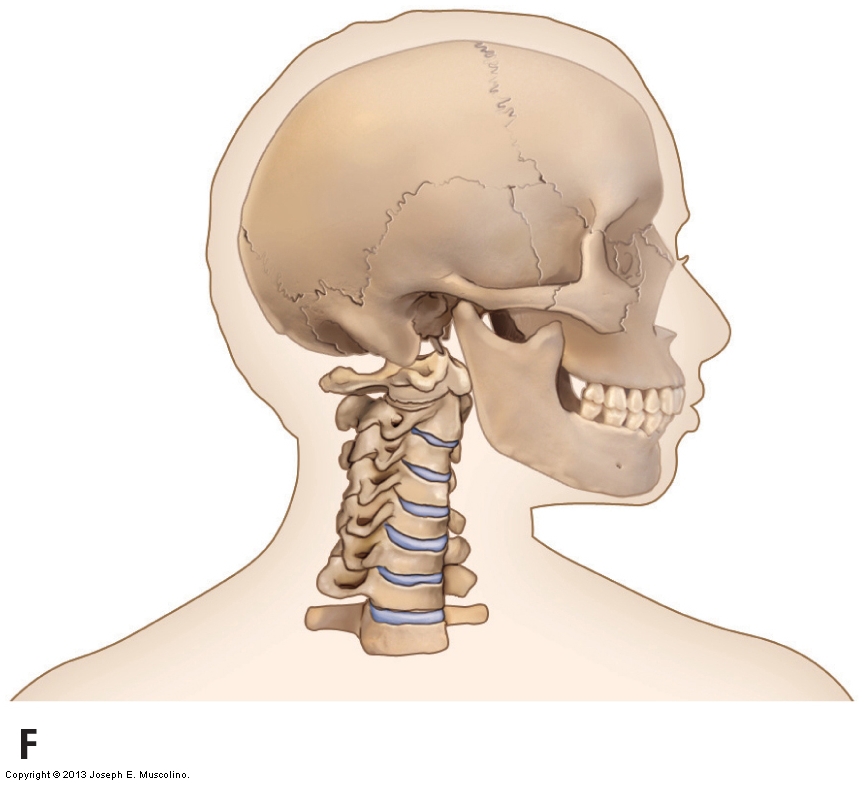
Figure 8. Six axial cardinal plane motions of the cervical spine. (A,B) Extension and flexion in the sagittal plane respectively; lateral views. (C,D) Left lateral flexion and right lateral flexion in the frontal plane respectively; posterior views. (E,F) Right rotation and left rotation in the transverse plane respectively; anterior views. (Courtesy of Joseph E. Muscolino – Originally published in Advanced Treatment Techniques for the Manual Therapist: Neck 2013.)
Ipsilateral Rotation and Contralateral Rotation:
The term ipsilateral rotation is used to describe the motion created by a muscle that rotates the neck to the same side as where the muscle is located—in other words, a left-sided muscle that rotates the neck to the left side is performing ipsilateral rotation, as is a right-sided muscle that rotates the neck to the right side. The term contralateral rotation is used to describe the motion created by a muscle that rotates the neck to the opposite side from where it is located—in other words, a left-sided muscle that rotates the neck to the right side is performing contralateral rotation, as is a right-sided muscle that rotates the neck to the left side.
The neck can also circumduct. Circumduction is not a joint action but a series of four joint actions performed in sequence: left lateral flexion, flexion, right lateral flexion, and extension. If these motions are carried out sequentially, one at a time, the head will transcribe a square shape. However, if these motions are performed smoothly, as is usually done, with the “corners” of the motions rounded off, then the head and neck move in a cone shape (Fig. 9) that leads many therapists to describe the motion as rotation. However, circumduction is not rotation—in fact, no transverse plane rotation occurs with circumduction. All four motions occur in the sagittal and frontal planes.
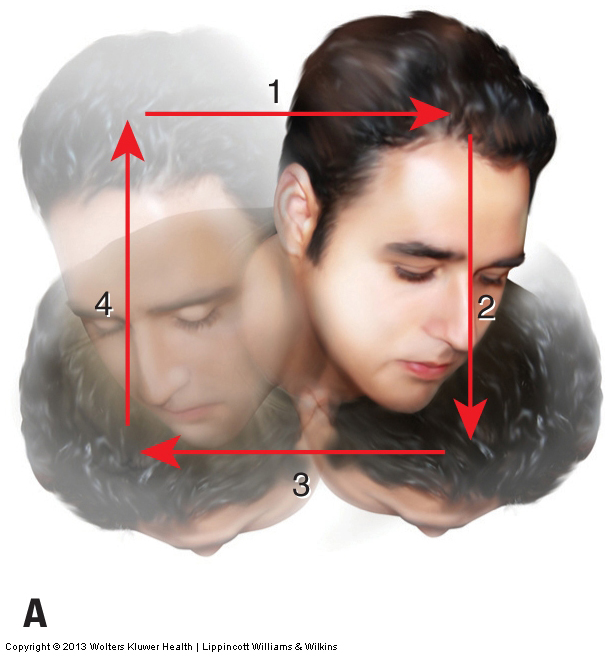
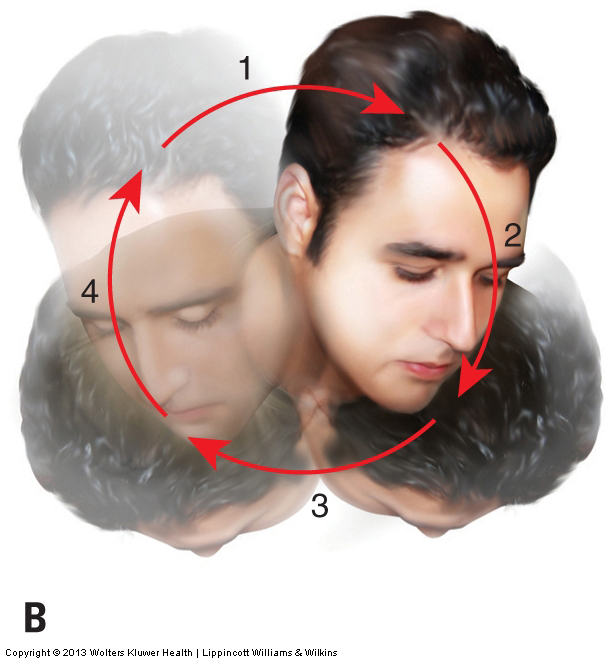
Figure 9. Circumduction of the cervical spine. (A) The four joint actions that create circumduction: left lateral flexion, flexion, right lateral flexion, and extension. When these four actions are carried out sequentially, the motions describe a square. (B) “Rounding out” the corners of the square creates the cone-shaped motion of circumduction.
Ranges of Motion of the Cervical Spine:
Table 1 shows average healthy ranges of axial motion of the cervical spine (head and neck), from the atlanto-occipital joint through the C7-T1 joint. It is important to keep in mind that not every client will necessarily have these ranges. Ranges such as those shown in Table 1 are averages across the entire population. Elderly people usually have a smaller range of motion than do younger people, and people with chronic injuries may also have decreased ranges of motion.
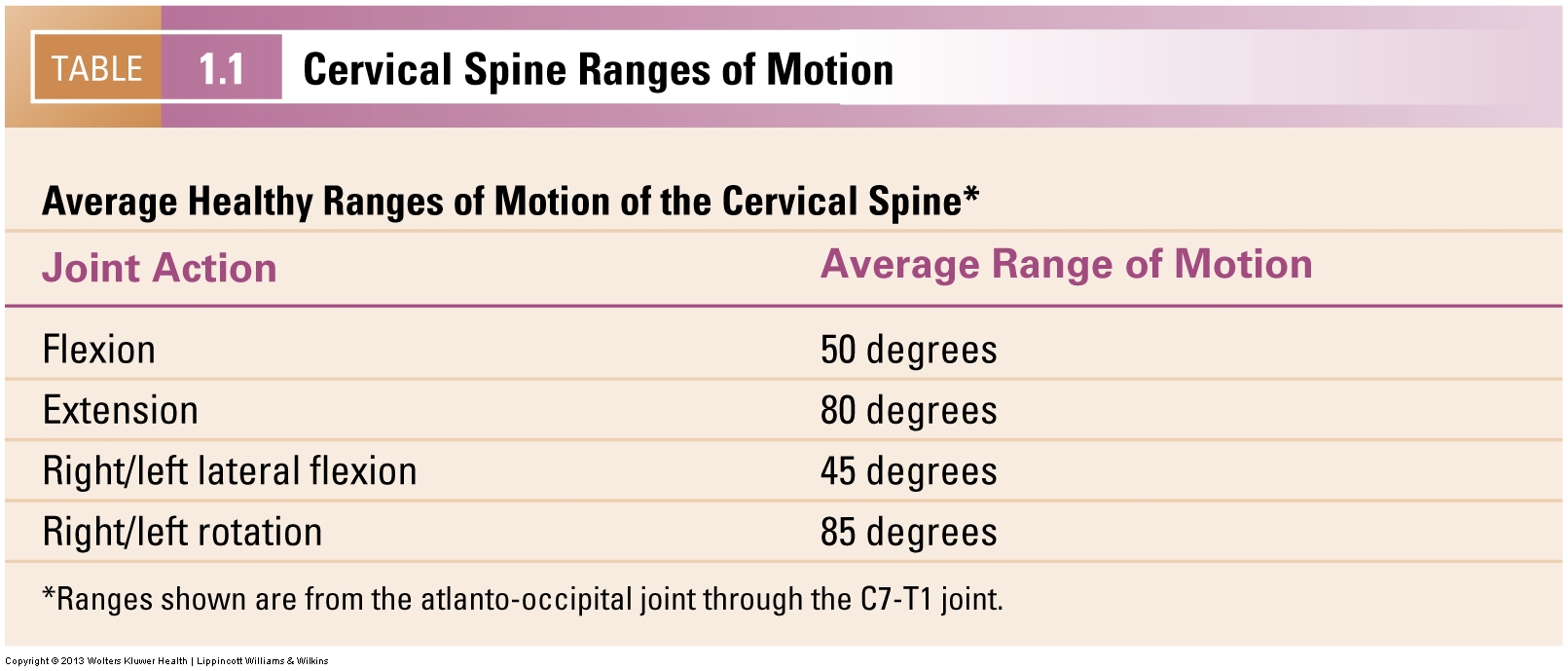
Nonaxial Motion of the Cervical Spine:
The cervical spine can also move nonaxially. Nonaxial joint motion is known as translation or glide. The cervical spine can translate/glide anteriorly and posteriorly. Anterior translation of the cervical spine is also known as protraction; similarly, posterior translation is also known as retraction. The cervical spine can also translate/glide laterally to the right and laterally to the left (lateral translations of the cervical spine are often thought of as the classic “Egyptian” motion in which the head is moved from side to side in both directions). The cervical spine can translate/glide superiorly and inferiorly. Superior translation is also called distraction or traction, and inferior translation is also called compression (Fig. 10).
Note: Nonaxial motion of the cervical spine is particularly important when the manual therapist is performing joint mobilization technique (whether it is Grade IV slow oscillations or Grade V fast thrust).
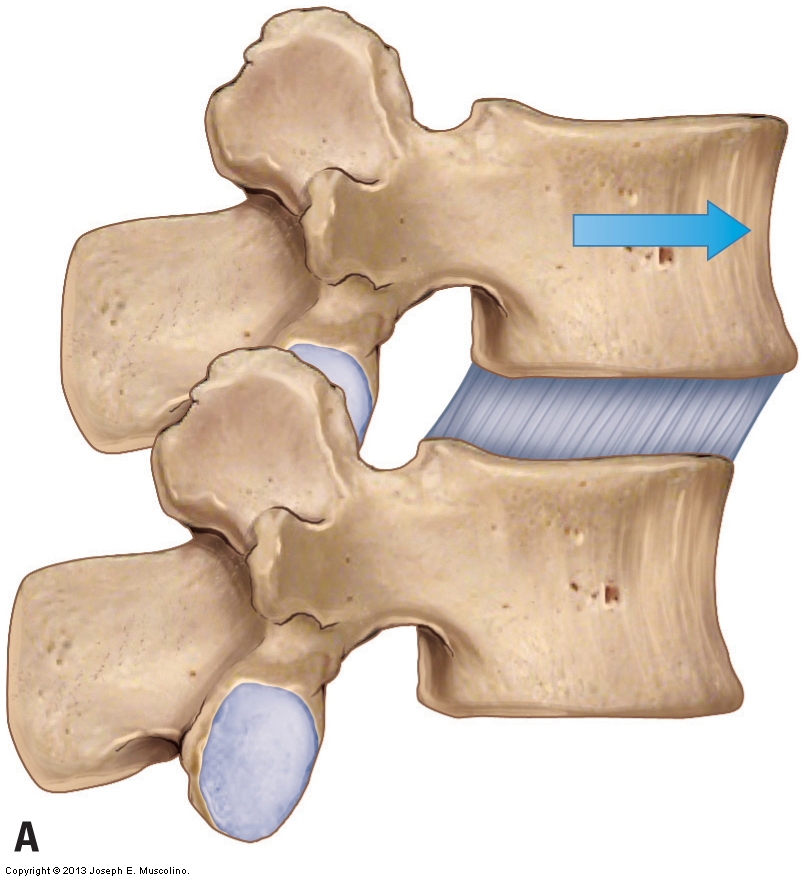
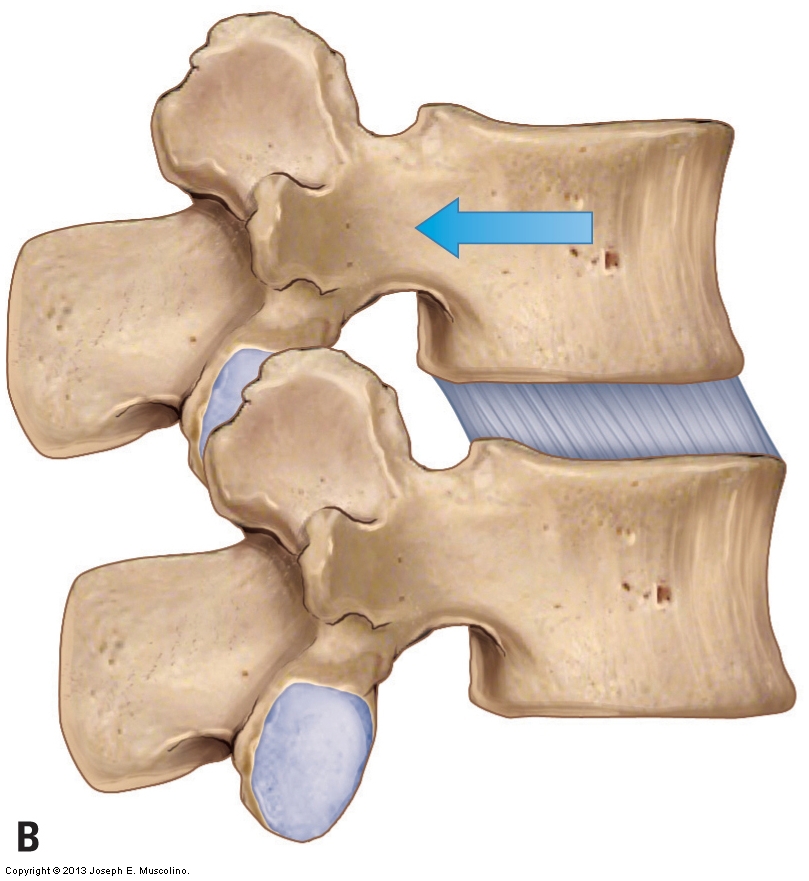
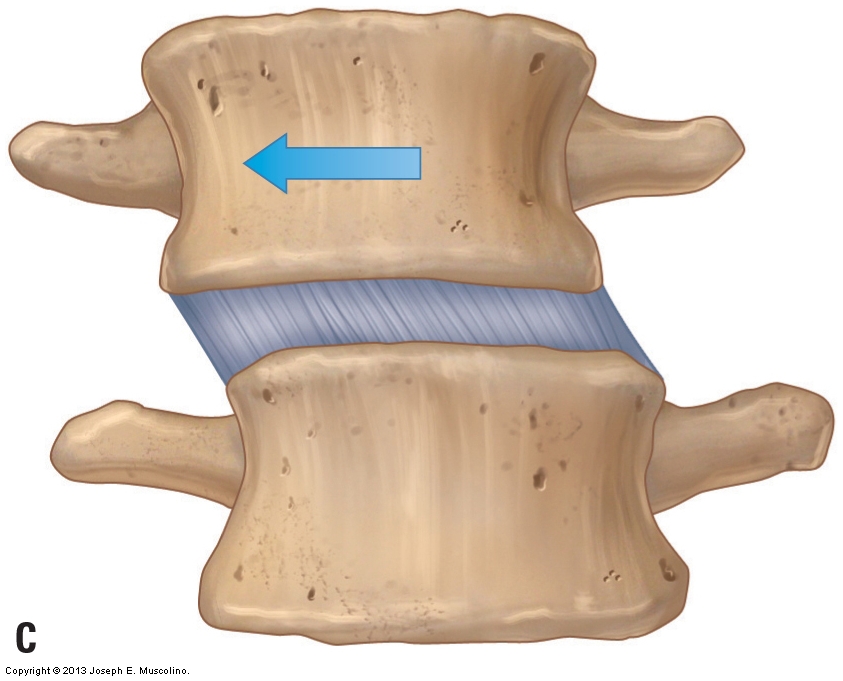
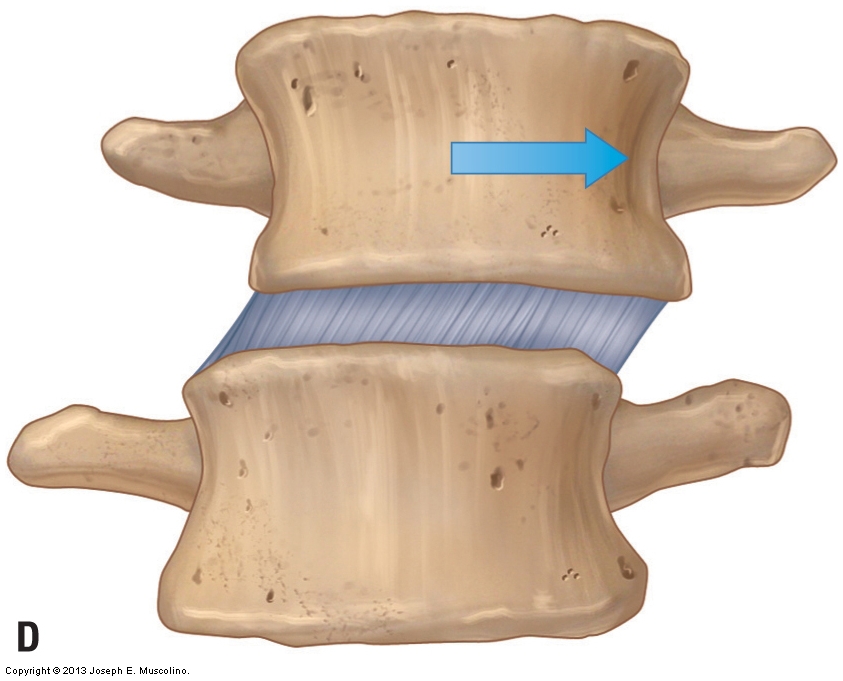
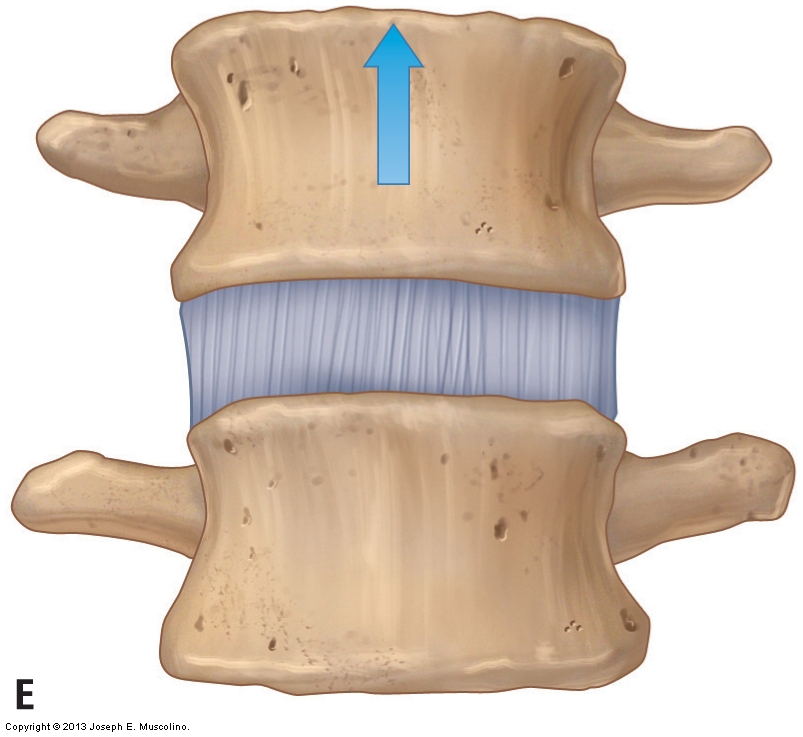
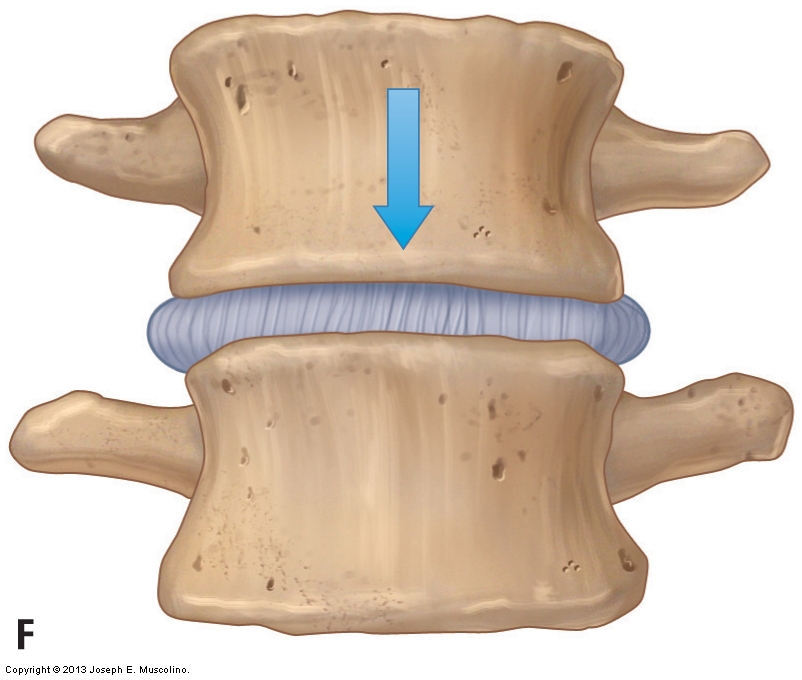
Figure 10. Nonaxial motions of the cervical spine. (A,B) Anterior glide (protraction) and posterior glide (retraction), respectively; right lateral views. (C,D) Right lateral glide and left lateral glide, respectively; anterior views. (E,F) Superior glide (also known as distraction or traction) and inferior glide (also known as compression), respectively; anterior views.(Courtesy of Joseph E. Muscolino – Originally published in Advanced Treatment Techniques for the Manual Therapist: Neck 2013.)
Note: This blog post article is the third in a series of six posts on the
Anatomy / Structure of the Cervical Spine for Manual Therapists.
The Six Blog Posts in this Series are:
- Introduction to the Cervical Spine
- Cervical Spinal Joints
- Motions of the Cervical Spine
- Musculature of the Cervical Spine
- Ligaments of the Cervical Spine
- Precautions When Working the Neck


